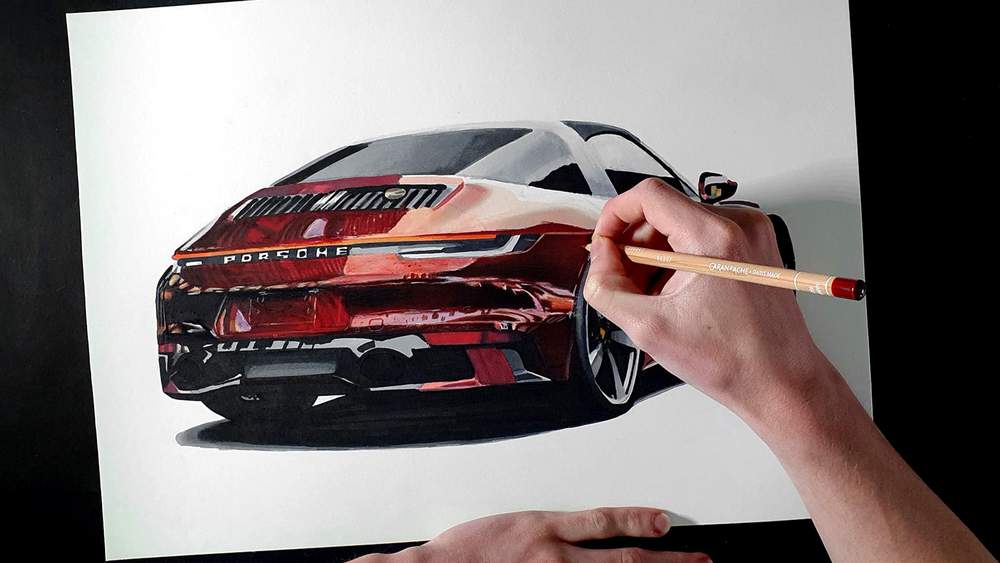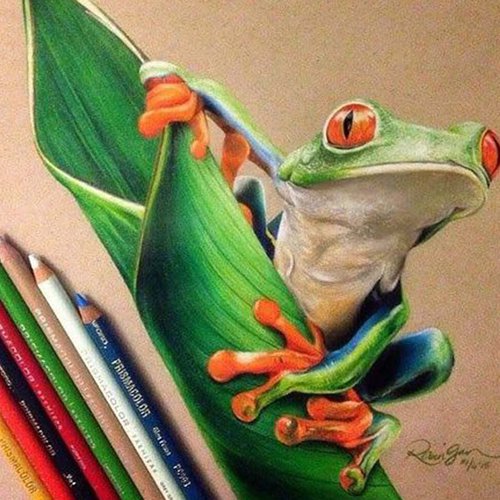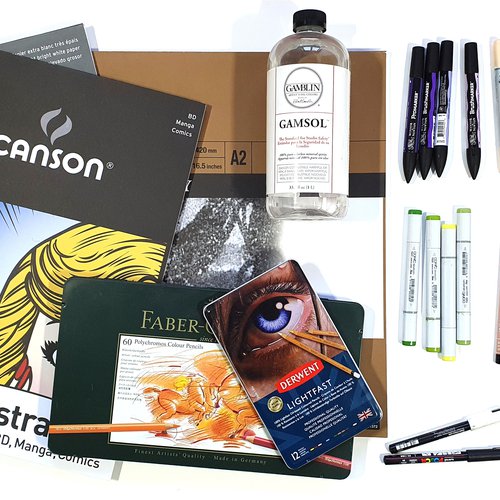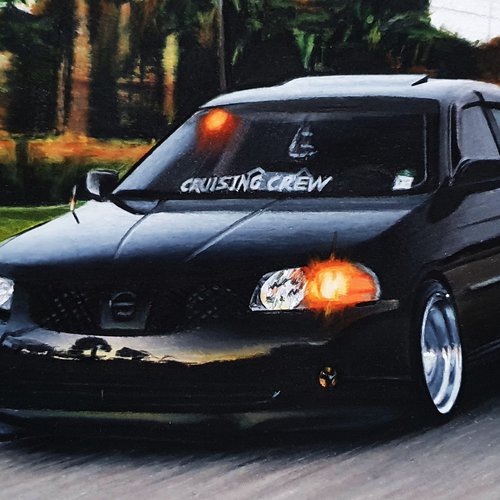7 Mistakes To Avoid When Drawing Realism

In the vibrant world of art, there's something uniquely captivating about a realistic drawing. The ability to recreate life on a piece of paper, with all its nuances of light, shadow, texture, and color, is a sought-after skill.
While it might seem like a daunting task, mastering the art of drawing realism with colored pencils is a rewarding journey, brimming with learning and growth.
But every journey has its pitfalls. So as an artist, you may find yourself caught in some common mistakes that can hinder your progress and affect the realism of your drawings. That's exactly what I'm here to help you avoid.
In this article, I'll guide you through the seven common mistakes to avoid when drawing realism with colored pencils. From rushing the process to neglecting the importance of a good sketch, we've got you covered.
So, sharpen those colored pencils, take a deep breath, and let's dive into the art of realistic drawing together!
And if you're interested in creating realistic drawings? You'll find the top 5 best colored pencils for that in my latest blog article.
What Mistakes Should You Avoid When Drawing Realism?
1. Rushing the Process
One of the most common mistakes beginners make when attempting to draw in a realistic style with colored pencils is rushing the process.
It's important to understand that realism isn't achieved overnight.
It requires time, patience, and a meticulous approach.
Drawing realism is akin to weaving a tapestry; it is a gradual process of layering colors and values to achieve depth, texture, and lifelike detail. Each stroke is a thread that adds to the overall picture.
Rushing can lead to impatience, which might result in a lack of attention to detail, poor value judgment, or excessive force in strokes.
These factors can compromise the final result, leading to a drawing that looks rushed or unfinished.
If you find yourself eager to finish quickly or frustrated by the slow pace, it might be helpful to remind yourself why you're drawing in the first place.
Is it for the joy of creation? To capture a moment or subject that moves you? To improve your skills and grow as an artist?
Keeping your purpose in mind can help you stay patient and dedicated.
Remember, even the most experienced artists can spend hours, days, or even weeks on a single piece to achieve a high level of realism.
So, don't be discouraged if your drawing doesn't come together as quickly as you'd like. Patience is an integral part of the artistic process.
2. Neglecting Values
The second common pitfall in drawing realism with colored pencils is neglecting values.
In art, 'value' refers to the relative lightness or darkness of a color.
Understanding and accurately depicting values is fundamental to creating realistic drawings.
Without accurate value relationships, your drawing can appear flat, lacking depth and three-dimensionality.
Imagine a bright sunny day; how do you depict the play of light and shadow on a tree or a face?
It's through values.
A subtle shift in value can show that a surface is curving away from the light, or that there's a soft edge between two objects.
By contrast, a dramatic value change can show a sharp edge or a strong light.
Neglecting values, or not giving them enough consideration, can lead to your drawings lacking this depth and looking unrealistic.
I like to start by first drawing the darkest tones I see in My reference image. This helps to judge the relative values of other areas a lot better.
Another thing you can do is squint your eyes when you look at your reference image.
This simplifies the values, making it easier to see the overall pattern of light and dark areas.
3. Not Using a Reference Photo
The third mistake many artists make when drawing realism with colored pencils is not using a reference photo.
A reference photo serves as the cornerstone of realistic art, providing a guide for proportions, colors, and fine details.
Without a reference photo, beginners can easily fall into the trap of drawing from memory or imagination, which often results in unrealistic or distorted images.
While experienced artists can draw from memory or imagination effectively due to their understanding of anatomy, light, perspective, and other aspects, it's generally best for beginners and those new to realism to use a reference photo to guide their work.
Not only is it important to use a reference photo, but it's also critical to use a clear and detailed one.
Using a blurry or low-resolution image makes it difficult to capture accurate details and can lead to a less convincing end result. Ensure your reference photo is high-quality, with clear details and good lighting.
There's a vast array of resources available for reference photos, including online databases like Pexels and Unsplash, books, or even your own photography.
Just remember, if you're using someone else's photo, ensure you have permission or that the photo is royalty-free to avoid any copyright issues.
4. Using a Heavy Hand
The fourth mistake many people make when creating realistic drawings with colored pencils is using a heavy hand. This refers to applying too much pressure while coloring.
While it might seem intuitive to press harder for more vibrant colors or darker values, it can often lead to issues that hinder achieving a realistic result.
Using a heavy hand can result in a couple of undesirable effects.
First, it can cause your drawing to have a streaky appearance as harder lines are difficult to blend and smoothen out.
Secondly, it can damage the tooth of the paper. The tooth of the paper refers to its texture, which is essential for holding onto the pencil's pigment. If you press too hard and flatten this texture, it can become difficult to add more layers of color.
The key to avoiding this mistake is patience and a delicate touch. Build up layers gradually, lightly adding color with each pass.
This technique, known as layering, allows for a more nuanced color application and can result in a smoother, more realistic appearance. It's a bit like whispering instead of shouting with your pencils.
When drawing, remember to relax your grip on the pencil and let the pencil's pigment do the work. As you become more comfortable with this lighter touch, you'll find that it provides greater control over your shading and gradients, making it easier to achieve the level of realism you're striving for.
5. Drawing What You Think You See Instead of What You Actually See
The fifth common error in creating realistic drawings with colored pencils is drawing what you think you see instead of what you actually see.
This can be a challenging hurdle to overcome because it requires combating ingrained perceptions and assumptions.
Humans have a tendency to symbolize objects.
For example, when we think of an eye, we might imagine a simplified almond shape with a circle in the center.
But in reality, eyes are complex and can vastly differ depending on lighting, perspective, and individual characteristics.
If you draw based on your symbolic idea of an eye, it may not look realistic.
To combat this, focus on drawing shapes, not things.
Break down your subject into simple shapes and value areas. Rather than thinking, "Now I'm going to draw the eye," think, "I'm going to draw this particular shape and value."
This approach can help you capture the unique characteristics and realism of your subject.
6. Outlining Objects
The sixth mistake that many artists make when attempting to draw realism with colored pencils is outlining objects.
While outlines are a staple in cartoon and stylized art, they don't exist in real life and can therefore make your drawings look less realistic.
In reality, objects are defined by changes in color, value, and texture, not by lines around their perimeters.
Instead of using outlines, try to define shapes and forms with shading and changes in color value.
Use your colored pencils to carefully render changes in light, shadow, and color. This can create a more natural appearance and help your drawing capture the subtleties of your subject.
Also, consider using "lost and found edges" in your drawings. This technique involves intentionally losing the edge of an object in one area and finding it in another by using value changes. It adds variety to your edges, enhances depth, and contributes to a realistic look.
7. Not Making Your Sketch Perfect
The seventh and final common mistake when drawing realism with colored pencils is not making your sketch perfect.
While the word 'perfect' might seem intimidating, it's not about making an infallible, detailed sketch. Rather, it's about laying a solid foundation for your colored pencil work.
Begin your drawing with a light sketch to establish the proportions and basic shapes of your subject. This preliminary sketch acts as a roadmap for your drawing.
If you neglect this step or rush through it, it can lead to inaccuracies in proportion, scale, and positioning, making it more challenging to achieve realism in the subsequent stages.
One tip to create a well-proportioned sketch is to use a grid or other measuring techniques, such as sight-sizing or comparing. They can help you accurately transfer the proportions of your reference photo to your drawing.
The grid method, for instance, involves creating a grid over your reference image and your drawing surface, which allows you to focus on one square at a time, making it easier to get the proportions right.
Here are more sketching techniques you can try.
Moreover, remember that your initial sketch should be light so that lines can be easily corrected or erased, and won't show through your layers of colored pencil.














Be the first to comment!
Comments
There are no comments yet.